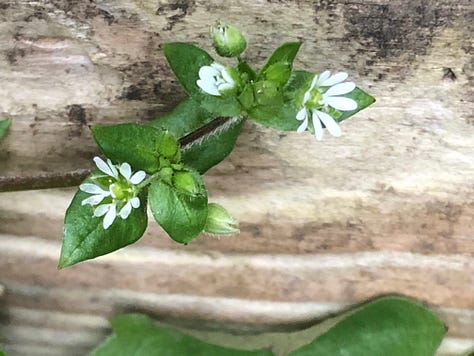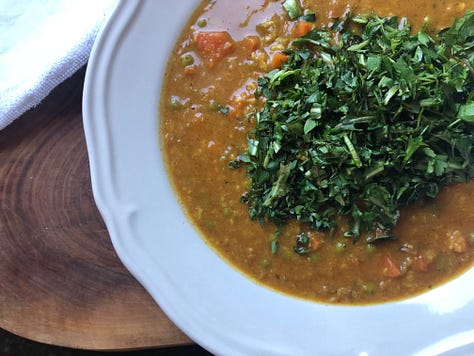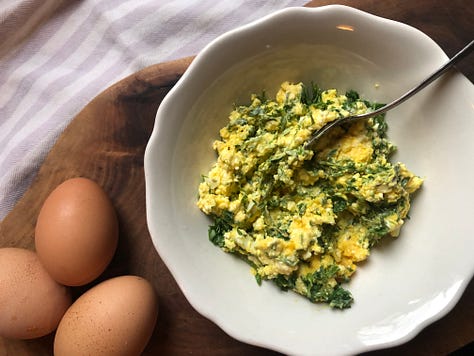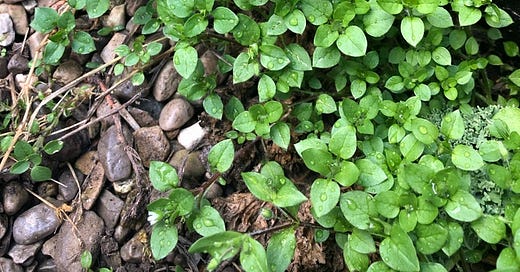Soothing, cool, and moist, chickweed is a safe and nutritive herb that is mild in flavour and can be consumed in food like quantities. Excellent in the Spring, when it is one of the first plants to emerge after the winter, is prefers cool and moist growing conditions. Look for it growing in shady locations, along the north side of buildings, under trees. It returns with a second flush of growth in the Fall after the temperatures have cooled down. Regular harvesting (best with scissors) can encourage stronger growth of the plant. It is a self-seeding annual that often crops up in areas of disturbed soil.



It is one of the best nutritive Spring tonics as it functions deeply as an alterative that helps clear stagnation from the lymph, kidneys, liver, bowel, lungs; helping the body to eliminate waste. It helps the kidneys regulate water.
It cool and moistening properties can be helpful for fevers and dry cough. It can be used as a poultice topically to help cool irritated, inflammatory conditions of the eyes, or over areas of red inflamed skin. It can be used in cases of mastitis - both taken internally and topically as a poultice. It helps calm inflammatory conditions both internally and externally and as such can help quell inflammatory conditions of the digestive tract. It will soothe an irritated bladder and can be useful in allergic conditions.
It seems to benefit fat metabolism and can be helpful when the body has a tendency for fatty tumors or lipomas.
It’s mild flavour and nutritive action makes it one of my favourite wild greens. It is often used as a food and can easily be added in to soups, salads, pestos and green sauces. Try it in a frittata. To enjoy the nutritive benefits, it also works well as a vinegar. It is often made into a poultice or salve for topical use.







